I have always loved the novel Zorba the Greek by Nikos Kazantzakis.
Driving through the Peloponnese region of Greece last fall, I unknowingly stumbled upon Zorba’s beach. The story itself may have been set in Crete, but I was about to learn that the beach town of Stoupa is where the book was born.
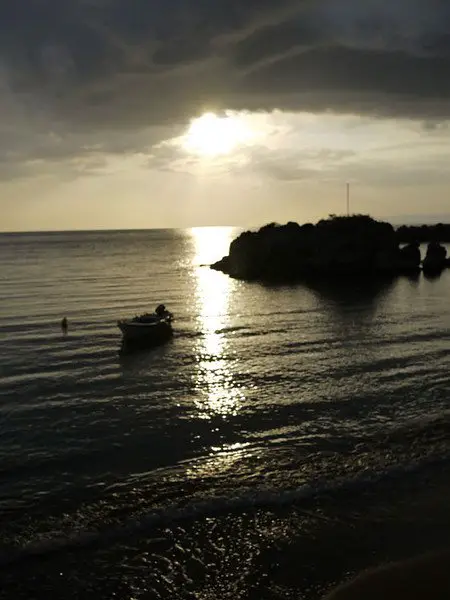
Traveling with my sister, who was filming a documentary about the olive harvest, we were headed to interview an organic oil producer in the Mani region of the Peloponnese peninsula.
Called Mani for its resemblance to a hand, these strips of land extend from the bottom of the peninsula like fingers. Rugged and sometimes inaccessible terrain, the region has long been known to be the refuge of hardy souls, as well as resistance groups during World War II.
Today, parts of the area are home to a burgeoning organic farming community.
You may also like: Peloponnesian Peninsula, Greece
When we arrived, I followed my sister through her interview and tour of oil presses, but in the afternoon we ventured into the village for a meal.
A maze of roads made it difficult to find the center of town, but once we located the waterfront, Stoupa seemed like a typical fishing village. Restaurants and cafes lined a snug bay and menus were written in English and German to accommodate the town’s growing expat community.
The water was warm enough even in November for swimming, so after lunch we headed to a local beach our host had recommended. On our way down a small road, we passed a bronze statue.
You may also like: The Greek Food Experience In The Hands Of A Monk
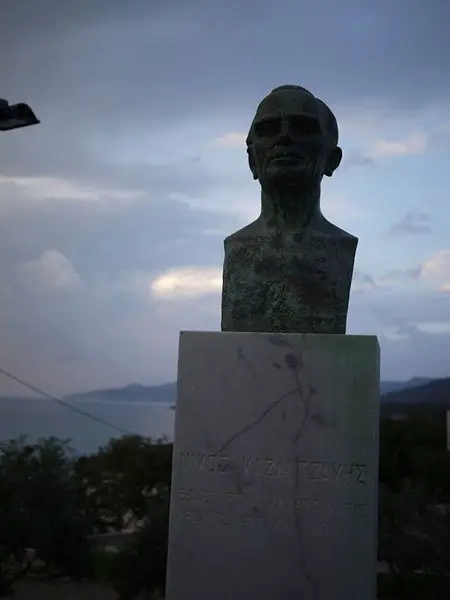
Stopping the car, we got out and were surprised to see a bust of Nikos Kazantzakis. Why here I wondered – no one in town had mentioned anything about the famous author being connected to Stoupa.
As we read on, we learned that not only did the author originally come to Stoupa in 1917 to set up a mining business, as does the narrator of Zorba the Greek, but that Alexis Zorbas is based on the life of a real man.
A local villager named Giorgos Zorbas acted as his foreman, and was the engineer who designed the cable system that took the lignite down the cliffs to be loaded onto boats. The business failed, but in 1947 Kazantzakis wrote his epic novel based on a man who was larger than life.
The book is set on the island of Crete, but Stoupa and its now-famous inhabitant were the inspiration.
We continued down a winding road to Kalogria beach, a pristine strip of sand embracing a tiny bay.
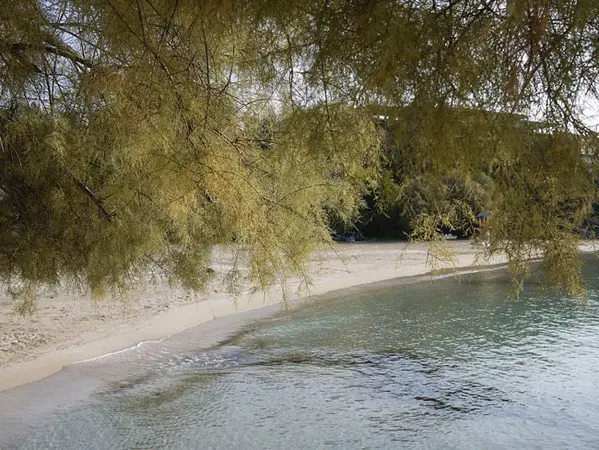
We learned that the little house where Kazantzakis lived is no longer there, but a small house in its place – whitewashed with iconic blue shutters – could pass for the original.
I thought of Kazantzakis coming home from a long day at the mines, having a drink with Zorbas on the terrace, and watching the sun set across the beach, the characters and storyline for his novel beginning to take form in his head.
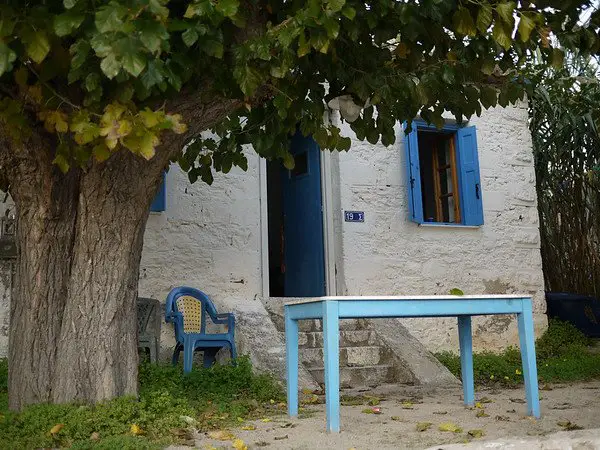
Kalogria beach was almost deserted, save for a group of young athletes. We pulled up a couple of chaise lounges, and as the November sun warmed my face I watched them wind their way through a homemade obstacle course, then do sprints back and forth across the sand.
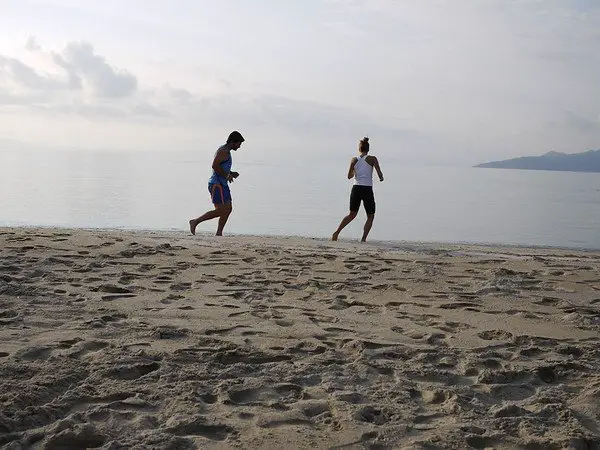
The water was too inviting, so I waded in. A small fishing boat chugged out of the harbor, disappearing around the rocky entrance to the bay. Fighting over some discarded bread, a pair of seagulls darted across the sky, their image reflected in the water, changing color from silver to platinum as the sun lowered in the sky.
You may also like: Corfu’s Unimaginable Beauty
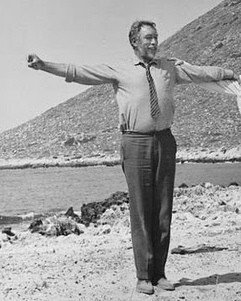
Eventually the athletes gathered up their belongings and began walking up the road towards town. With the sun close to setting and the air growing chilly, we picked up our towels and dragged the chairs back to the edge of the beach. As we walked across the sand to the car, I turned around to take one last look behind me.
Suddenly, I could clearly envision the last scene of the movie version of the novel. Zorba, alone on the beach; dressed in pants and a shirt with sleeves rolled up, moving across the sand — full of emotion, life – what the Greeks call kefi. Bending over, he stoops to touch the ground with one hand, and then standing up straight, raises his arms to the sky.
Slowly, he begins to dance…

I’m so delighted by this article, Amanda! 🙂 I’ve long wanted to see Zorba, the Greek, but over the years clean forgot about it. I have it reserved now and can’t wait to snuggle in and watch this fantastic story. LOVE your photos. 🙂
I had not heard about this book, and apparently I should have. Very educational!
I love your narrative! Quite dreamy. I had no clue that Greece could be so warm during the latter half of the year. I could almost smell the sea and feel the breeze through your words. <3
Nicely written sister and fondly remembering the silky sand and sea.
Just back from southern Greece where I found a totally different scenario of rain, floods, snow…and then finally the sun returned after 4 weeks of winter chaos. November is a great time to travel to southern Europe when you will find low season prices and the real possibility of warm waters and quietude.
Interesting article. I’ve traveled a tiny bit in that area – so wild. As I recall there is an interesting book (one of many I’m sure) partially about the Mani during the civil war : Th Flight of Ikaros by Kevin Andrews. I’m sure it’s long out of print – my copy is yellow with age.